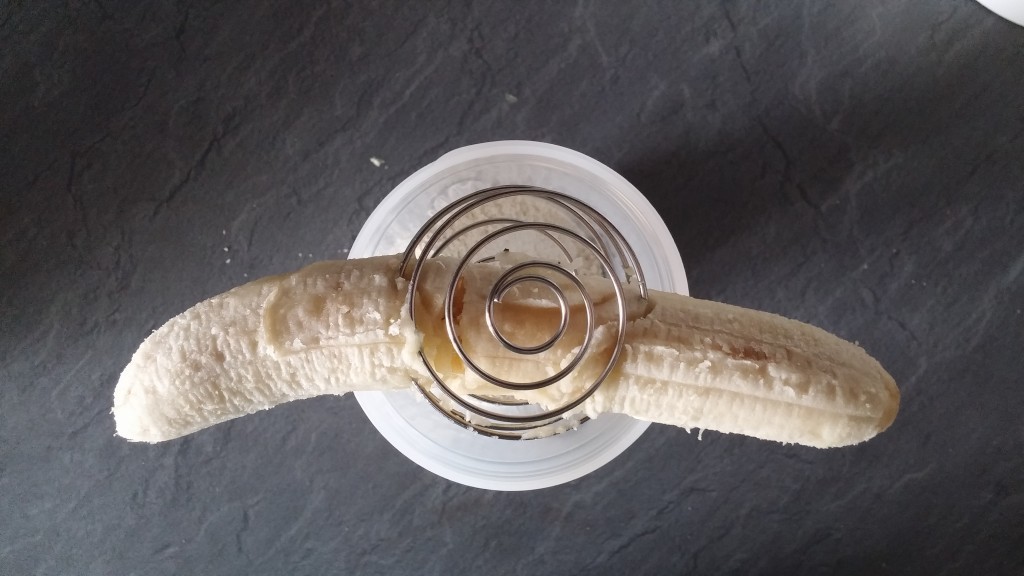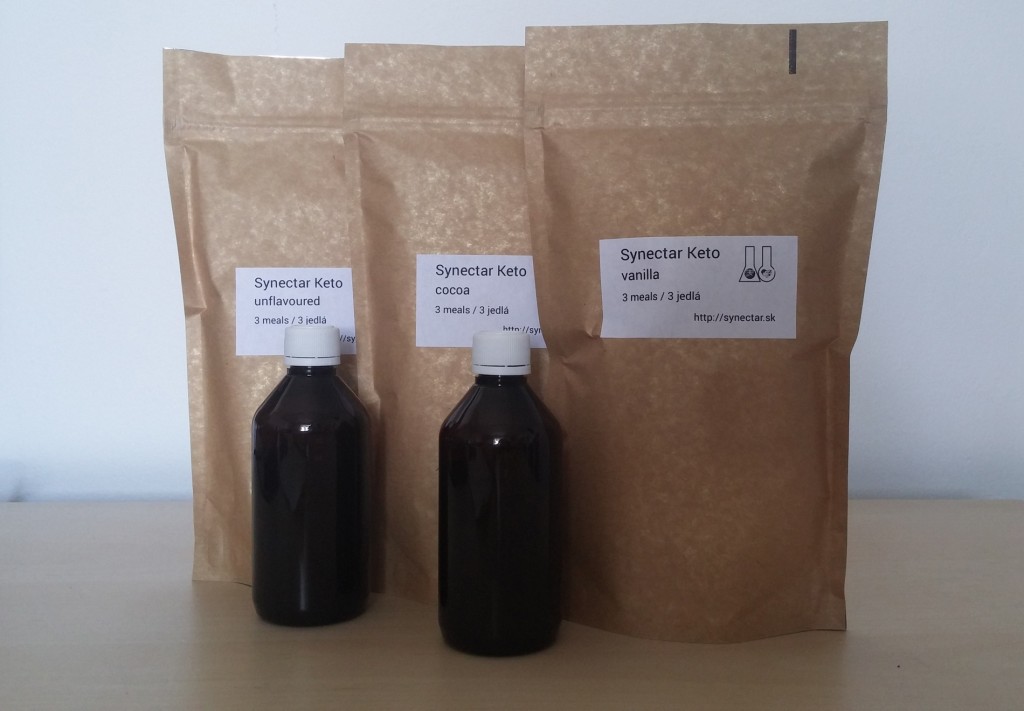Have some Synectar Keto, y’all
Releasing European ketogenic DIY powdered food recipe to the public.
We’ve always been fans of low-carb, high-fat diets, which is probably clearly visible in the macronutrient ratio of our classic Synectar One recipe. Only 23% of its energy comes from carbs, 27% from protein and 50% from fat, in contrast with “classic” recommended diets which usually have the ratio of 50% carbs, 25% protein and 25% fat.
There’s much debate about these numbers in the soylent community – which ratio is supposed to be the best? Which one is “healthier” or more “natural to human beings”? As you wade through the endless streams of internet discussions, trollposts, blogposts, links, journals and videos on this topic, suddenly there comes the moment when you realize that maybe this just boils down to what you like to believe in. Sure, there’s scientific knowledge to help you decide – the trouble is, for every article posted by one camp, there will be an opposing article posted by the other camp the following day. Which isn’t to say that it doesn’t matter what you choose – indeed, everyone should read the arguments do their research thoroughly, but in the end, you just have to decide on your own.
Going Keto
One of the more “alternative” decisions of this kind is to live on a ketogenic diet, which is, simply put, eating as little carbohydrates as it’s possible. The ketogenic diet can thus be qualified as very low-carb, very high-fat, adequate protein diet. This should help you get your body into a special state called ketosis, in which you happen to have a raised level of ketones in your blood, which effectively means your body runs on fat instead of glucose. Ketosis isn’t unnatural – the body switches to ketosis every time you fast, which also means you are in ketosis while you sleep, and once you wake up and eat your breakfast, your body switches to glycolysis and chews on that blood glucose again.
The proponents of ketogenic diet try to achieve a state of constant ketosis by means of eating a next-to-none amount of carbohydrates in their meals, while keeping the amount of calories normal (to prevent starving), arguing that carbohydrates are not an essential macronutrient for the human body (the essential macronutrients being fats and protein. Then there’s alcohol, which might or might not be an essential macronutrient, depending on your hobbies!). Ketogenic diet is then supposed to help with weight control, but can also be used to treat or prevent diabetes, cardiovascular disease or high blood pressure. Interestingly enough, ketogenic diet is also used to fight epilepsy.

No, this is not keto. source
All right, so?
Why am I even trying to explain this rather complicated subject in this highly insufficient, simplistic and laic fashion, and how does all this relate to Synectar and powdered foods?
You see, it isn’t exactly an easy task to keep those carbs down. They are virtually in every piece of food around you and it certainly isn’t enough to get rid of bread, pastry, pizza and chips (assuming you’ve already parted with the obvious sweets, cakes and candy). To keep track of all the food you eat throughout the day and all the macro- and micronutrients it contains is too tedious on its own for most people; now you’ll have to do not only that, but also always keep an eye on the carb counter and plan carefully or improvise a lot. This can be done in private, but imagine now you’re going abroad for a holiday, planning to attend a festival, are invited to a family dinner or just don’t have the time to constantly think about the stuff you eat.
Yes, you guessed it – we need powdered foods to come to the rescue. With a special powdered mix created with ketones in mind (…or blood, yea), you should be able to forget about all that tracking, planning and worrying. You just take your mix with you wherever you go, use it whenever you’re hungry, keep your body in ketosis all the time and profit. The only thing you have to take care of now is how to explain your obscure habit of drinking from a protein shaker during that family dinner.
Ketogenic soylent
Indeed, the soylent community has seen and seized this opportunity from the very beginning of (soylent) times; after all, the ability to create a blend that fits your specific requirements perfectly is at the core of DIY soylent community. No wonder there are almost three hundred ketogenic recipes on the DIY site already, and a few commercially available, professional alternatives which you can buy and “just add water”.
The problem is, however, that to this date, there are no “native” ketogenic alternatives available on European market. While there are few of them in the US (let’s mention KetoSoy, Keto Chow and KetoLent for the general idea), the European producers don’t seem to be interested in this kind of products, or so it seems – even though every once in a while, the question “is there any European keto?” arises in the soylent community.
We’ve created our own ketogenic version of Synectar a while ago, just for the fun of it, but have kept it private somewhere on our DIY account, as we never really got to the actual mixing of the recipe. Recently, we’ve been prompted by three people contacting us almost at once, asking if we could provide a ketogenic soylent for them, so we decided to prepare a batch for the first time, and taste it ourselves, thus avoiding possible future poisoning-induced lawsuits. It tastes…great! We’ve been quite surprised ourselves – the exclusion of our “traditional” oats (which we use in every recipe) and utilization of psyllium and hemp protein at once, together with high amount of MCT oil powder and even higher amount of rapeseed and olive oils resultes in a very smooth, pleasant experience, which tastes, dare I say, even better than the original Synectar (though to be fair, that might simply be caused by us being overfed with the old Synectar).
Since we survived the tasting (and more), we see no reason to keep the recipe private, so, voilà, here’s
Synectar Keto, 1800 kcal
With the macronutrient ratio 6% carbs, 23% protein and 71% fat and the net amount of carbs being 25g, drinking this stuff three times a day should definitely get you into ketosis.
Feel free to mix the recipe at home. All of the ingredients are sourced from within EU, so that shouldn’t be a problem – all except one, Potassium Gluconate, which comes from the US (but that specific eshop has quite reasonable shipping rates too). Depending on the sources of ingredients and the bulkyness of your orders, this should cost you something between 7-9 EUR per day, possibly even lower, which is cheaper than the cheapest commercial alternative from the US (not to mention the shipping and customs) – as DIY should always be, anyway.
If you’re wondering about that red amounts of chromium, molybdenum and biotin in the recipe – the multivitamin we use adheres to US DRIs, where all three values would be exactly 100% of DRI (which means it shouldn’t kill you, at least while you drink this in the US). We’re searching for a suitable replacement, so if you happen to find one that works well, let us know!
What’s next?
Well, we’ve just created the recipe – no one has any practical experience with it, except ourselves. We’re eager to see people using the recipe, finding new, better and cheaper ingredients, adjusting the values, and in general having fun with it. We’d love to see some long-term effects of it, too, however ridiculous this may sound.
And, of course, we want to know whether this product can get you into constant ketosis, as in theory it should.
Now, keep in mind that we are no nutrition experts, just self-taught DIY enthusiasts. We also have a lot to learn about ketosis itself and are not on a ketogenic diet ourselves. Please do contact us with any feedback, recommendations, questions and criticism that comes to your mind; we’re always eager to learn something new.


